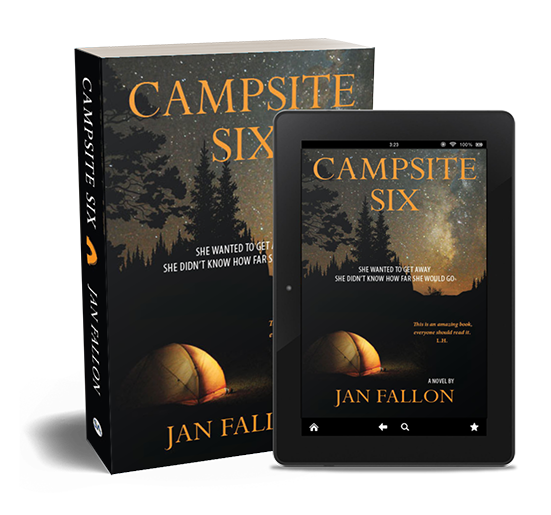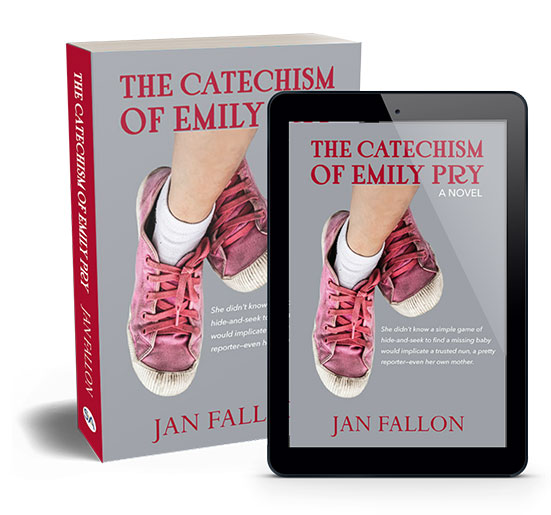
Ruth, the Moabitess, was Mahlon’s widow, Naomi’s daughter-in-law, the wife of Boaz, mother of Obed, grandmother of Jesse, and great-grandmother of David. Ruth was described in scripture in these many roles, each one a step of deep calling and clear purpose. The Book of Ruth describes God’s provision for those who choose to follow Him. It is a story of the redemption of Naomi as God’s chosen faithful and of Ruth as a gentile accepted by faith. It is an analogy of God’s redemption offered to all people, which proclaims “whosoever believes in him shall not perish but have eternal life” (John 3:16). How did Ruth, the Moabitess, a gentile who lived in enemy land and worshipped pagan gods come to follow the God of the Israelites? How did she develop the faith that brought her to a foreign land to become an ancestor of King David and part of the lineage of Jesus Christ our Lord?
Ruth’s story unfolds following a time when Israel turned her back on God, during the time when God ruled Israel with judges. After Joshua and his generation died, the next generation did not know the Lord, or what he had done for Israel. This generation provoked the Lord to anger because of the way they served Baal and other gods of the land. Whether they were in the land of Aram, Sidon or Moab, they did evil in the sight of the Lord. In his anger, the Lord handed them over to these nations whom plundered them and caused them great distress. Even though Israel’s disobedience provoked the Lord, he had mercy on them and rose up judges to save them (Judges 2:8-23). Israel was the enemy of many nations. It was a dark time when Israel forgot their covenant with God and chose to be apart from him (Deuteronomy 30: 15-16).
Ruth, the Moabitess, lived in Moab, a country whose heritage came from Lot. Lot was spared during the destruction of Sodom, when Abraham sought his cousin Lot’s salvation from God’s wrath. When Lot became drunk and was seduced by his daughter, they had a son and named him Moab – the father of the Moabites (Genesis 19:37). Moab lived in strife with Israel, yet they were kindred people because of Lot’s relationship to Abraham. Moab was terrified of Israel, because whether the Lord put Moab over Israel or the Lord put Israel over Moab, Moab always suffered (Numbers 22:2).
When Elimelech brought Naomi and his two sons to Moab to escape the famine in Judah, it was not the first time Israelites lived in the land of Moab. However, it may be the first time while in Moab that Israelites remained faithful to their God. Elimelech’s family is a beautiful remnant of a people who loved the Lord before the dark time of the judges. We do not know why Elimelech, Mahlon and Kilion died in Moab, but the Lord’s blessing remained with Naomi. When Naomi heard that the Lord was once again providing food for His people in Judah, she quickly prepared to return to her hometown of Bethlehem. There wasn’t a shortage of food in Moab, so it must have been more than food that led her to go back to Judah (Ruth 1:5-6).
During the ten years while Elimelech’s family resided in Moab, their heart remained with Judah. They did not serve the pagan gods of Moab. They remained strangers in a strange land. Even though Naomi would face embarrassment by returning to Judah without heirs, she chose to “return home” (1:6). Naomi’s decision to leave Moab is the prelude to Ruth’s commitment to go back with her, to be with her people, and to follow her God.
Orpah, Naomi’s daughter-in-law and the widow of her son Kilion, emotionally expressed her love for Naomi, but her heart decided she should remain in Moab. In contrast, Ruth’s devotion increased in intensity with these words; “I will go to your land, and there I will stay, with your people, with your God – I will die and be buried near you.” Ruth’s commitment was not only to Naomi, but to the Lord when the height of her vow is expressed, “May the Lord deal ever so severely with me if anything but death separates you and me” (1:16-17). Naomi’s faith undoubtedly had immense impact on Ruth. When Ruth makes the decision to go with Naomi, she is making a reflective decision to leave Moab, to leave her people and to leave her gods. She may have felt totally lost when she considered remaining in Moab. She may have suffered rejection from her kinsman because of her association with the Israelites. Like Ruth, we too are lost, and must leave everything behind when we choose to follow Jesus (Matthew 19:29).
Bethlehem was stirred when Naomi returned from Moab. Did the question, “Could this be Naomi?” mean that it was incredible that she would return alone from a foreign land? Naomi responded desperately when she said, “Don’t call me Naomi… call me Mara, because the Lord has made my life very bitter” (Ruth 1:19-20). This sad reply highlights the emptiness that Naomi felt as she returned home with Ruth. Interestingly, although name changes do occur in the Bible, this one did not stick. Naomi is never referred to as Mara. In scripture, when a name is changed successfully, it is God who changes it: Abram to Abraham, Sara to Sarah, Jacob to Israel, Simon to Peter. Her name remained Naomi, meaning pleasant, which foretells of God’s forthcoming provision (Urdang, p. 1558). His provision would go beyond the need of her immediate redemption in Judah, and would ultimately lead to the redemption of her people (Matthew 1:5).
Naomi and Ruth arrived in Bethlehem just as the barley harvest was beginning (Ruth 1:22). In Judah – a place she remembered as empty, paralleling her own emptiness, there was now a full harvest. Through the faithfulness of Ruth, Naomi received provision immediately from the land, but not just any land, the land of her kinsman: Boaz. The Lord filled Naomi; she would no longer be barren. The barley grain that Ruth and Naomi received in Judah is symbolic of Jesus, the Bread of Life and those who come to Him that will never go hungry (John 6:35).
Ruth’s commitment to Naomi was awe inspiring to the people of Bethlehem. Throughout the book of Ruth, she is repeatedly described as Ruth, the Moabitess, Naomi’s daughter-in-law. The writer reminds us of the unusual characteristics of this person, Ruth. There needs to be a continuing explanation why this woman from Moab, an enemy country with a foreign god, is in Bethlehem. Her presence in Bethlehem represents those outside of Israel, who choose to follow Jesus Christ: gentiles who are grafted in by faith in his sacrifice on the cross (Romans 3:29).
There is another description that follows Ruth, “…you are a woman of noble character” (Ruth 3:11). With all the townspeople who had their eyes on Ruth during her introduction to Bethlehem, she lived nobly among them. The Lord blessed Ruth for her faithfulness, and gave her the ability to restore a heritage for Naomi through her relationship with Boaz.
Boaz met Ruth while she was gleaning in his barley fields. The story tells this meeting with a flavor of coincidence. “As it turned out, she found herself working in a field belonging to Boaz” (2:3). However, God’s design is very apparent. Boaz seemed unusually fixed on assisting Ruth by giving her his favor. His offering to Ruth to stay in his field, imploring her not to go anywhere else and protecting her from harm, brought a deep sense of belonging to her. It meant that she would not go hungry and that she need not be ashamed, because Boaz gave her his favor. Boaz’ response to Ruth mirrored the response of Joseph to Mary before the birth of Jesus. During the time of her great need and vulnerability Mary expected Joseph’s rejection. But what God provided was divine counsel by the Holy Spirit for Joseph to take Mary as his wife (Matthew 1:20). I believe that Boaz was also moved by the Spirit “not to be afraid to take (Ruth) home as your wife.” Boaz’ desire to keep and protect Ruth in his fields is the foundational illustration of his covering for her.
Naomi responded with jubilation to Ruth’s explanation that she was working in the fields of Boaz. “The Lord bless him. He has not stopped showing his kindness to the living and the dead! That man is one of our kinsman-redeemers”(Ruth 2:20). This proclamation marks the turning point for Naomi. She is joyful because she sees her redemption drawing near, just as we joyfully watch for our own salvation the day when Christ returns (Luke 21:27-28).
Boaz responds to Ruth with increasing levels of intimacy that present a beautiful story of love and devotion. First, Boaz followed the law of the land by allowing Ruth, a poor widow, to glean behind his workers (Freeman, 1972, p. 127). But he went beyond the law to grace when he elevated Ruth above his own servant girls and commanded his workers to leave stalks for her (Beers, 1980, p. 241). He then invites her to his own table, to partake of the bread and the wine, offering communion – symbolic of our communion with Christ (Ruth 2:14-18). Boaz was uniquely positioned to respond with love to Ruth. As the son of Rahab, a prostitute from Jericho, who feared the Lord and was saved from its destruction, Boaz most likely had incredible hope for Ruth, knowing his own mother’s story (Joshua 6:25, Matthew 1:5). This gives us a glimpse of the faith and compassion that was part of his intrinsic character.
When Naomi sends Ruth to the threshing floor where Boaz sleeps to protect the grain of his harvest, the pinnacle of his acceptance and intimacy toward Ruth is portrayed. Ruth lay at his feet, ready to become one of his possessions, like the grain he sleeps by (Beers, 1980, p. 245). She puts herself at his mercy when she asks him to “spread the corner of your garment over me, since you are a kinsman-redeemer” (Ruth 3:9). This gesture symbolizes his protection and possession of Ruth, and is a foreshadowing of the ceremonial throwing of the talith; the garment the husband throws over his wife during a Jewish wedding (Freeman, 1972, p. 129). It portrays Boaz’ intention to bring honor and redemption to Ruth, the Moabitess.
Boaz, Mahlon’s kinsman, was not under the same obligation as a brother-in-law would be to marry Ruth, Mahlon’s widow. Boaz had the right to take ownership of the land and marry her if no other closer kinsman would do so. But he was not under the law (Freeman, 1972, p. 130, Deuteronomy 25:5). When the closer kinsman relinquished his right, Boaz, the second in line had the option (Ruth 4:2-8). This parallels the provision throughout scripture that it is the second son that redeems God’s people. Ishmael, the first born to Abraham by Hagar, forfeited his birthright to Isaac who was born of Sarah. Esau sold his birthright as the firstborn to Jacob who later became the father of the nation of Israel. Adam gave up his birthright as God’s first son when he sinned and broke man’s relationship with God. It is Jesus, the second Adam, who came to redeem us and restore relationship with our Heavenly Father (1 Corinthians 15:45-49). Boaz, acting as the go’el, or kinsman-redeemer, for the jeopardized heritage of Naomi, represents God’s continued provision for his people. The Lord God of Israel continually offered great acts of mercy to return them to the blessing of his covenant (Hill & Walton, 1991, p. 185). God completed his great act of mercy to all mankind through the sacrifice of his only Son, Jesus (John 3:17).
Boaz’ announcement confirms the transaction of the property and acquisition of Ruth, the Moabitess. Twice he proclaims to the elders and all the people, “Today, you are witnesses!” in an unabashed celebration of his union with Ruth, the Moabitess, who is never again referred to in such a manner (Ruth 4:9,10). Through Boaz, Ruth is reconciled to her new faith (and likened to Leah and Rachel by the elders themselves) just as we are reconciled through Christ, “a new creation, the old has gone, the new has come” (2 Corinthians 5:17).
It may seem like the story is complete with the marriage of Ruth to Boaz, but another story awaits completion: Naomi’s heritage is still without an heir to carry on her family name. Naomi is still waiting for her emptiness to be filled. When the Lord enables Ruth to conceive and give birth to a son, the women call him Naomi’s son, her kinsman-redeemer, able to renew her life and sustain her in her old age (Ruth 4:14-17). This son, Obed, the son of Boaz and Ruth, became the father of Jesse and the grandfather of David, and an ancestor in the lineage of Jesus Christ.
The story of Ruth is a story of salvation. It portrays the salvation of Ruth, a gentile, by redeeming her from Moab and the worship of false gods into Israel and a relationship with the true and living God. It portrays the salvation of Naomi and her family, by restoring her fullness through the birth of Obed. It portrays the salvation of the nation of Israel, through the lineage of Obed, the grandfather of King David, who restored Israel to the Lord after the time of the judges. And finally, through the characteristics of Ruth and Naomi, this story portrays the salvation of “anyone who believes (in Jesus): first for the Jew, then for the Gentile” (Romans 1:16).
While reading the Book of Ruth, I felt like a woman in the barley fields, hoping to glean something of substance. Hungry for God’s Word, I had come empty to the land of promise. My desire was to get enough to tame my hunger, but like Ruth being showered by the provision of Boaz, I received more than I hoped for. Not only was I reconciled to God’s Word, I began to observe the invaluable meanings and connections between the events and people that are part of our Christian heritage. These meanings and connections affect my life.
Ruth was a woman that knew the best way to respond to people. When Naomi was disheartened while preparing to leave Moab alone, Ruth responded emotionally and clung to her with cries of belonging. Once they returned to Bethlehem, Ruth observed the practice of gleaning and responded with practicality. “Let me go to the fields and pick up the leftover grain,” she entreated Naomi. Ruth was also able to respond within the confines of tradition when she followed the commands of Naomi to approach Boaz on the threshing floor. Ruth’s ability to respond with good manners for each occasion was a quick lesson in etiquette that I applied to a personal situation. I often respond emotionally to situations, and anything otherwise doesn’t seem honest. But, through Ruth I was reminded that different situations require different responses. The one that worked best for my situation was tradition. I was able to exemplify Ruth’s good manners by responding to what was traditional in our family, even when I didn’t feel emotionally connected.
Observing that Boaz was the son of Rahab in Matthew chapter one totally astounded me! It spoke volumes to me of God’s plan for Ruth’s redemption before she was even born. Boaz grew up as part of a story of God’s provision for those who are, through faith, brought into the family of Israel. His mother Rahab shared some of the same characteristics of his wife, Ruth. They were both from enemy nations, were women who desperately needed provision and both learned to fear the Lord God of Israel (Joshua 2:11, Ruth 1:17). When Boaz saw Ruth, he did not see her as the other Ephrathites saw her. He saw her through the eyes of someone who knew God’s love for the gentiles, and this attracted him to Ruth in an extraordinary way.
This reminded me of my relationship with my husband. When we met, my mother lived with me, and I was her provider. Many people told me that this was not the way to attract a husband. I believed, however, that God would bring someone who could handle it. When Chuck and I met, he was attracted to that aspect of who I was. His grandmother had taken care of his two single aunts during the depression, and was struck by her personal sacrifice. Instead of being a stumbling block to our relationship, my mother was a vehicle of his devotion. Like Boaz for Ruth, God prepared Chuck to be my husband years before we had even met.
Studying the Book of Ruth has opened up for me the treasury within the Bible. As I surfed through its pages to find the details of Ruth’s life, I was energized with wonder. Wow, Moab came from an incestual relationship! Obed was considered Naomi’s son? Boaz’ garment was symbolic of the Jewish wedding? Rahab was Boaz’ mother! Balak, who cursed Israel, was from Moab! Each trail led to new stories, interesting facts, and the proclamation of God’s unusual love for unusual people. Ruth led me into a deeper love for her as my ancestor and mentor in Christ, and she helped give me a revived spirit for God’s Word.
Ruth, the Moabitess, was not only Mahlon’s widow, Naomi’s daughter-in-law, the wife of Boaz, mother of Obed, grandmother of Jesse, and great-grandmother of David – she was a very real lady who struggled through faith and found her provision in God.
Great are the works of the Lord; they are pondered by all who delight in them. Glorious and majestic are his deeds, and his righteousness endures forever. He has caused his wonders to be remembered; the Lord is gracious and compassionate. He provides food for those who fear him; he remembers his covenant forever (Psalm 111:2-5).
References
The NIV Study Bible. (1985). Grand Rapids, MI: Zondervan.
The New Compact Topical Bible. (1972). Grand Rapids, MI: Zondervan.
Urdang, L. (Ed.). (1973). The random house college dictionary. New York.: Random House.
Freeman, J. M. (1972). Manners and customs of the Bible. Plainfield, New Jersey: Logos
International.
Beers, A. F. (Ed.). (1980). The book of life. Grand Rapids, MI: Zondervan.
Hill, A. & Walton, J. (1991). A survey of the Old Testament. Grand Rapids, MI: Zondervan.



0 Comments